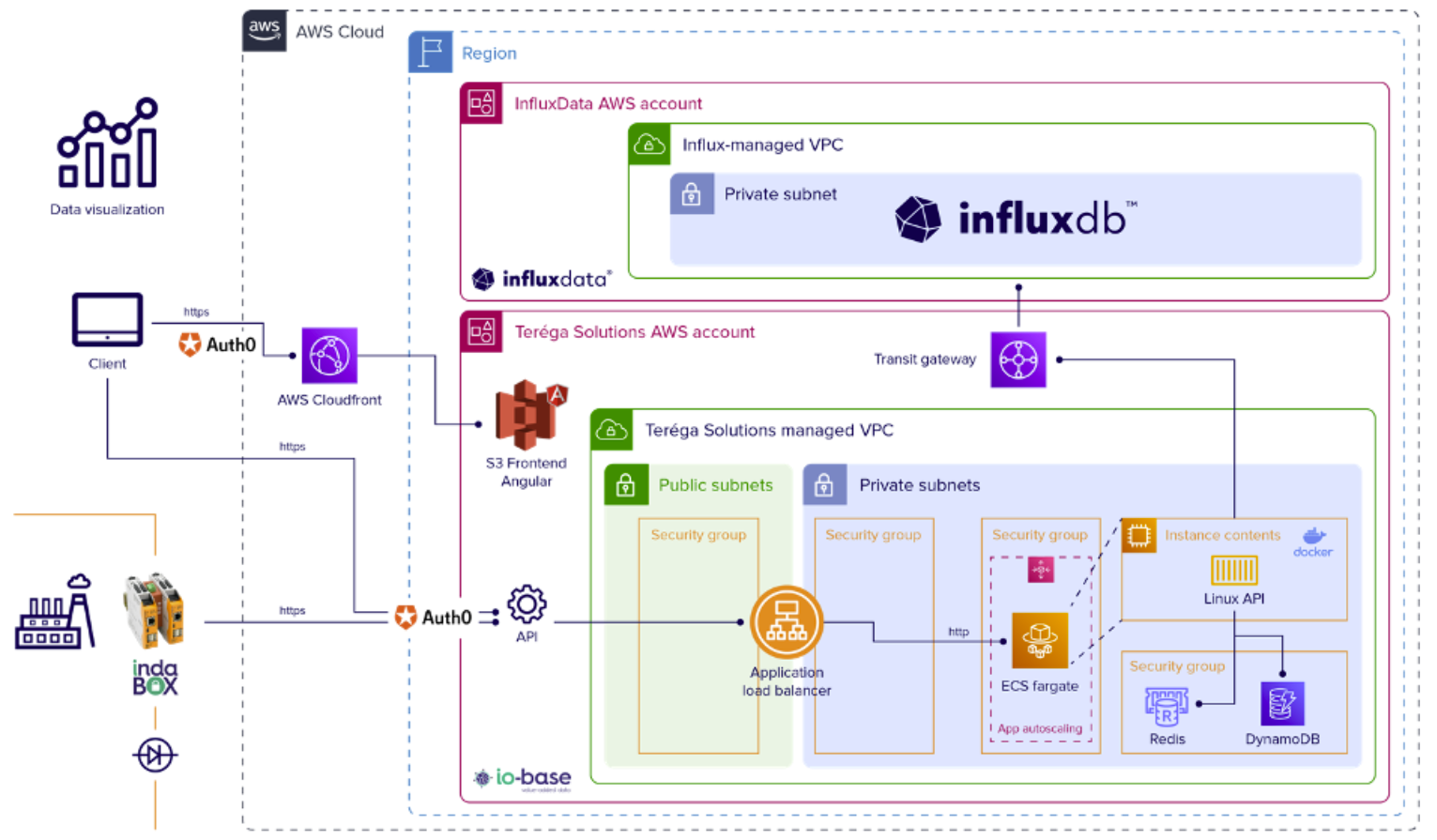Teréga Replaced Its Legacy Data Historian with InfluxDB, AWS, and IO-Base
By
Jessica Wachtel
Use Cases
Aug 16, 2023
Navigate to:
Teréga, a gas storage and transportation company in southwest France, manages a network of 5,000 kilometers of natural gas pipelines. The company’s mission is to accelerate the energy transition currently taking place, both at a territorial and a European level. It aims to extend a culture of responsibility to all its business and day-to-day activities.
Teréga’s challenge
Unprecedented challenges such as climate change and the transition toward a decarbonized energy system are causing major upheaval in the energy sector. As the reliance on fossil fuels shrinks, the demand on energy remains the same. In response to this next phase of evolution, Teréga created a mixed-energy business model. This new business model optimized the use of fossil fuels and made good use of the link between energy and gas by adding biomethane and hydrogen to more traditional energy sources.
Teréga’s business model wasn’t the company’s only commercial element that needed future proofing. The legacy IT infrastructure and data historian the team used to manage all their equipment also needed complete modernization. Teréga’s intricate system of on-prem servers and limited cloud resource data historian were an expensive maze divided by firewalls and demilitarized zones. Yes, the highest levels of security were necessary to protect France’s critical services, but it came at a cost.
The system was difficult to build, making it challenging to onboard new customers and projects, and to maintain. It was laborious and expensive to maintain even after the initial build. Because data must pass through several physical and virtual layers, there were data transit delays for analysis and visualization, and the data was not widely available - thus limiting innovation and the creation of new services. So, with technology making huge strides forward in the decade since Teréga first designed its legacy system, Teréga looked for a new cloud-native data historian to better suit the company’s needs.
But Teréga engineers’ research and testing found no cloud-native data historian on the market that specialized in time series industrial data. Teréga’s use case called for a high-performing, scalable, resilient solution to handle its massive amount of time series data. The company decided to build its own historian and, ultimately chose InfluxDB to serve as the foundation.
The solution
Teréga built a proprietary data collection device, Indabox, and a cloud-native data historian, IO-Base. Indabox replaced Teréga’s legacy on-prem server system and is the only hardware needed to connect the on-site operational technology (machine sensors, industrial controls) to IO-Base. Indabox relies on various protocols (Modbus, Ethernet/IP, OPC-UA, and others) to connect to industrial equipment. It then processes and sends data securely, in a unidirectional pipeline, to the cloud.
There are no restrictions on how much data or how frequently IO-Base can ingest data because Teréga’s new historian’s foundation relies on InfluxDB’s Cloud 1 product, which doesn’t limit the amount or frequency of data ingest. InfluxDB’s ability to create metrics from raw event data in real-time during ingestion really set the database apart from others on the market. Real-time metrics simplified deployment and support for over 100k metrics. The metrics include details on processes related to pipeline management (pressure, gas quality, valve status), machine sensors (electricity consumption, vibration, process timing), more general categories (temperature, electricity and gas meters), among other areas. Since InfluxDB Cloud 1 is a managed, single-tenant version of the database, Teréga has the full benefit of InfluxDB support 24/7 while still having the autonomy to manage its deployments.
Teréga engineers built IO-Base with a variety of user interfaces, with selectable characteristics based on user preference. These front-end applications enable data retrieval, visualizations, user management, and the creation of new metrics using formulas. Teréga built these front-end applications with Angular. They host IO-Base on AWS because of its robust, reliable, and secure infrastructure.

Teréga’s experience with IO-Base and Indabox were so positive that they made both available for third party use through its subsidiary, Teréga Solutions. Indabox is available for purchase and IO-Base is now a SaaS platform. In addition to the tools and templates Teréga uses in the energy sector, they built tools and templates that fit with other business sectors as well.
To learn more about Teréga, IO-Base, and Indabox, read the full case study here.
